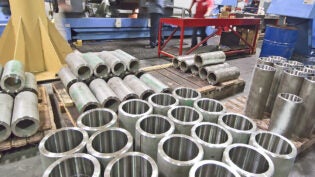
Physical stores have seen rising competition from online brands, but they still have some serious advantages, including the ability to generate foot traffic. However, to succeed in drawing in foot traffic, stores have to go out of their way to stand out from the competition.
The best way to do this is to come up with a storefront display that’s simultaneously inventive and aesthetically appealing. But you can’t just conjure a creative idea out of thin air—so what can you do to come up with better, more appealing displays?
Standing Out
These are some of the best strategies you’ll find for creating more powerful storefront displays:
- Invest in the right glass. First, make sure you’re investing in the right glass. There are many thicknesses and styles to choose from, and if you want to add a signature touch, you can even get it engraved or decorated. In general, the more clean and open your glass is, the more flexibility you’ll have for your display, but a few permanent touches could help your brand become more memorable.
- Use a minimal display. Minimalism is in. Our world is one that’s bombarded with information, advertising, and clutter, and most people have grown to filter out most of these inputs as white noise. Relying on a minimalistic display, which incorporates tasteful amounts of white space with only a handful of intentional center pieces, will draw onlookers’ eyes exactly where you want them to go. Don’t try to stuff your display with as many items as you can. In this case, less is more.
- Choose your best products. This should go without saying, but you’ll only have room for a handful of items in your display, so choose your best products. Here, “best” is a subjective and variable term. “Best” may mean the products most likely to get attention from passersby, your newest products (so you can highlight them to your recurring customers), or even your most profitable items.
- Add lights or moving parts. Nothing catches the eye like light and movement, so make sure there’s some of each in your display. A flashing light here or there can draw attention from down the street, and a moving display makes your storefront seem like a video, rather than a still image. Just remember the importance of minimalism here; too many flashing lights can seem tacky, and excessive or fast movement may seem chaotic rather than pleasing.
- Utilize greenery. If you can, incorporate some plants into your display—especially during spring and summer months. A basket of flowers, or a small herb garden in your front window can make your place seem livelier and more inviting to passersby.
- Stay in brand. Most of these rules are generic because much of the power of your display is dependent on the qualities and tone of your brand. Your brand should be customized to appeal to your specific target demographics, rather than the general public, and those key characteristics should be evident in your display choices. Is your brand fun-loving and carefree? Consider something youthful, including toys and jokes. Is your brand more professional and focused on image? Make sure everything is lined up perfectly, with sharp colors and deliberate choices.
- Change your display regularly. Many of the people walking by your storefront have walked by there before. If they see the same display every time, even if it’s imminently creative, eventually, it’s going to blend into the background. If you want to stand out to those people, you’ll need to change your display on a regular basis—usually once a month, or at least once a quarter, is plenty.
The Ongoing Experiment
The best way to succeed in optimizing your storefront is to treat the endeavor as an ongoing scientific experiment. Because there are so many variables that factor into how people respond to a given display, it’s virtually impossible to predict how your customers might react to your latest arrangement—even if it’s unequivocally creative.
Instead of vying for perfection, make a change and see what happens. Take careful measurement of your foot traffic—including increases or decreases—and pay attention to customer comments. Use this information to fuel your next attempt, and use careful analysis to determine which elements of your displays are most and least successful. Eventually, you’ll be able to determine the best themes, products, and styles for your storefront, and optimize accordingly.
 Author: Jenna Cyprus is a freelance writer from Renton, WA who regularly covers tech, business, marketing, and social media. Follow her on Twitter.
Author: Jenna Cyprus is a freelance writer from Renton, WA who regularly covers tech, business, marketing, and social media. Follow her on Twitter.
11097 Views












